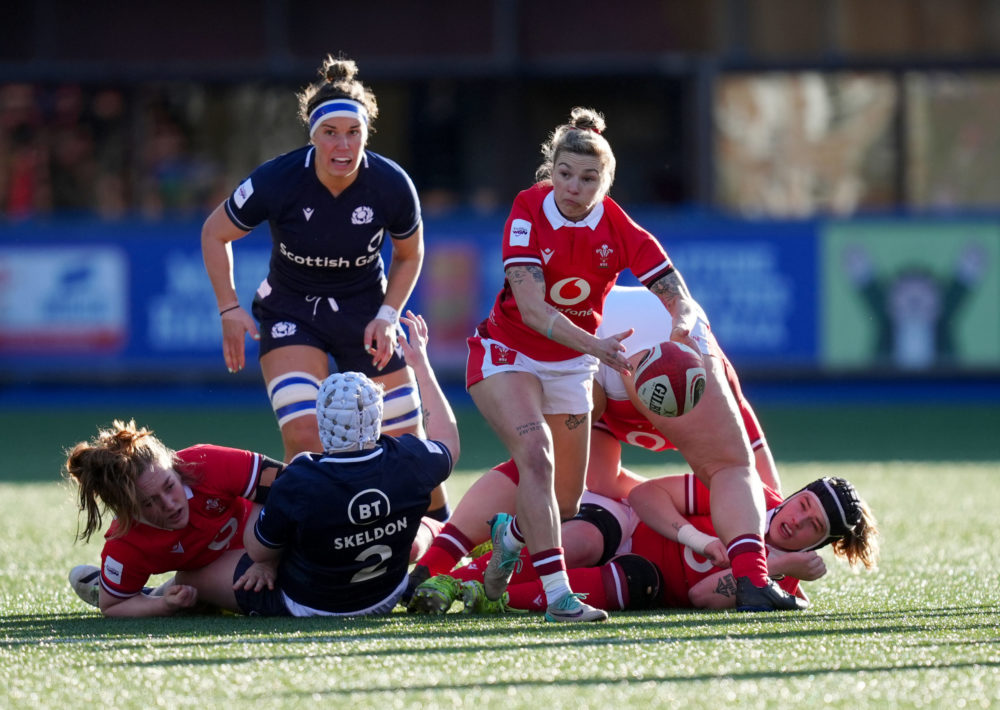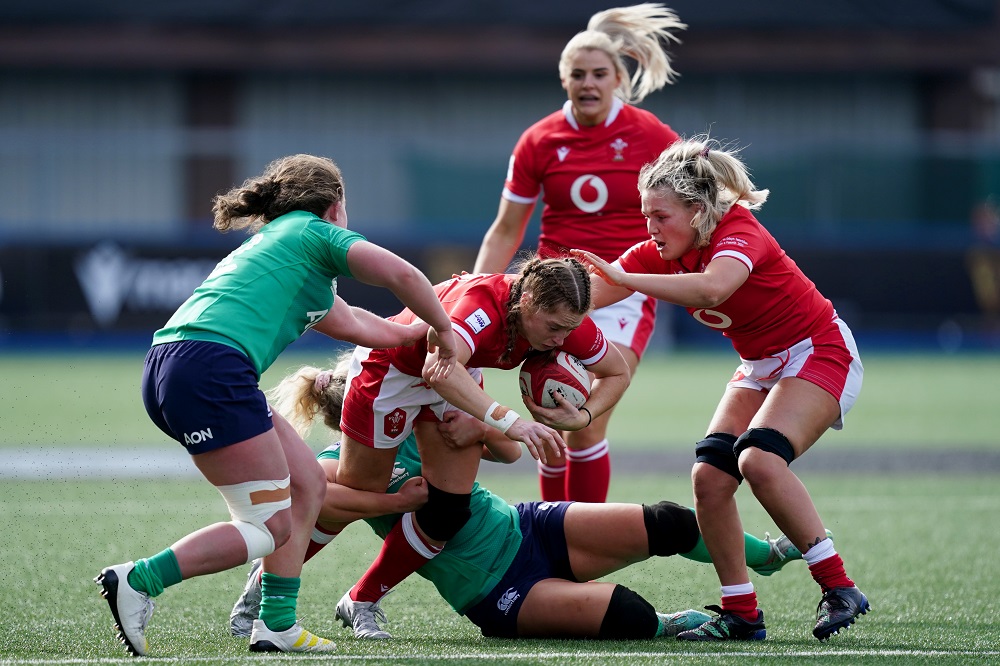Why women’s rugby needs its own injury prevention strategy

Julian Owen, Lecturer in Sport & Exercise Physiology, Bangor University
Eloise Kirby, PhD Candidate, Bangor University
With the Women’s Six Nation’s Championship underway, there is mounting public concern regarding the risk of injuries to players.
In recent years there has been a significant rise in the number of women playing rugby. Women now make up one-quarter of the global rugby playing population. But despite the fact that there are similar injuries in both men and women’s rugby, female players need their own injury prevention strategy.
There is evidence to suggest that gender differences may influence injuries in team sports in general.
Research shows that lower neck strength may predispose female rugby players to concussion. Research has shown that females have greater head acceleration in response to an applied force than males, which could predispose them to concussion. This may be because females have significantly less isometric neck strength and neck girth.
‘Knock knee’
Anatomical differences in the female pelvis, knee and lower leg can alter lower limb alignment. The resulting knee valgus, or “knock knee”, may increase injury risk to the knee particularly the medial collateral ligament, meniscus and possibly the anterior cruciate ligament (ACL).
Gender differences in neuromuscular function (the communication between the brain and muscles) have also been reported to contribute to ACL injury and possibly concussion.
While there are such differences, the common types of injuries in male and female rugby are similar. Concussion tops the list as the most common specific injury diagnosis with lower leg injuries to the ankle, knee and hamstring following behind.
Higher risk?
Within rugby union, an injury is defined as any physical complaint sustained by a player during the game that results in the player being unable to take part in future rugby activities.
At the elite level, women’s rugby has an overall injury risk that is nearly 50% lower than men’s rugby. This equates to about three injuries in every male professional match, and less than two injuries in every women’s rugby match.
In amateur rugby, the landscape is different. Both male and female players face a comparable risk of injury, albeit a lower overall risk than at the professional level.
Emerging evidence also suggests that the overall burden of injury may be higher in females than males at this level. Injury burden is a composite measure of injury incidence, or rate, and the days missed that is used by experts to understand the overall impact of injuries.
Concussion and ACL injuries
Concussion is a mild traumatic brain injury, usually caused by an impact to the head or body. The rate of concussion in men’s professional rugby is more than 30% higher than in women’s rugby. Research is limited on this topic, but it could be because of the increased size and speed in male rugby increasing the force of contact to the body and therefore also to the head and neck.

However, gender differences in overall injury risk means that concussion accounts for more than one-third of all injuries for women and less than a quarter of injuries for men.
Also notable is that female players face more adverse consequences than men following concussions, such as double the recovery time. The cause of concussion should also be considered. Whiplash and head to ground contact are substantial factors in female players, and more so than in men. This is due to lower isometric neck strength meaning less control of the head during a tackle.
ACL injuries also plague elite women’s soccer. But in elite rugby, they are 20 times higher for male professional rugby players than their female counterparts.
Looking at the lower tiers of rugby, it becomes clear that women face a five times higher rate of ACL injuries compared to men. Similar to concussion, ACL injuries represent a greater injury burden for women in comparison to men with 50% longer recovery times.
Unanswered questions
Many questions remain to be answered on female rugby injury. For example, as women’s rugby transitions towards professionalism, how will this affect injury risk?
The lack of elite female teams has possibly contributed to women taking up the sport at an older age than men. This may explain the emerging evidence of a link between poorer tackle technique and higher injury risk in female players.
There are many other factors we need to understand better too. For example, does the greater injury burden, often reported in women’s rugby, stem from a lack of adequate medical support for female teams? And is the menstrual cycle related to sports injury?
We also need to better understand breast injuries. These injuries are prevalent in other sports such as basketball, soccer, softball and volleyball. Nearly half of female athletes in such sports have reported they have sustained a breast injury. But there is very limited research or established guidelines concerning breast protection and breast health in women’s rugby.
Despite these unanswered questions, what is clear is that when it comes to playing contact sports, women cannot be viewed simply as smaller versions of men. Instead of imposing male injury prevention strategies on women’s rugby, it would be more beneficial to redirect attention towards understanding the specific injury risks in the women’s game. Then we can develop tailored injury prevention strategies for female players.
This article was first published on The Conversation
![]()
Support our Nation today
For the price of a cup of coffee a month you can help us create an independent, not-for-profit, national news service for the people of Wales, by the people of Wales.





Noone is saying women shouldn’t play rugby. But we are entitled to ask whether it should be promoted as much as it is. I played schoolboy rugby. I used to row at a high level. Very noticeable that women come to rowing in large numbers, with negligible injuries. BTW, the article should not talk about ‘gender differences’ this is a fluid and politicised term. Needs a scientific assessment based on science ie the obvious black and white ‘sex differences’.
Football is looking at the same issue. We are looking at different effects on the bodies of the two sexes, male and female. For those who parrot trans women are women it is time to look at the science.